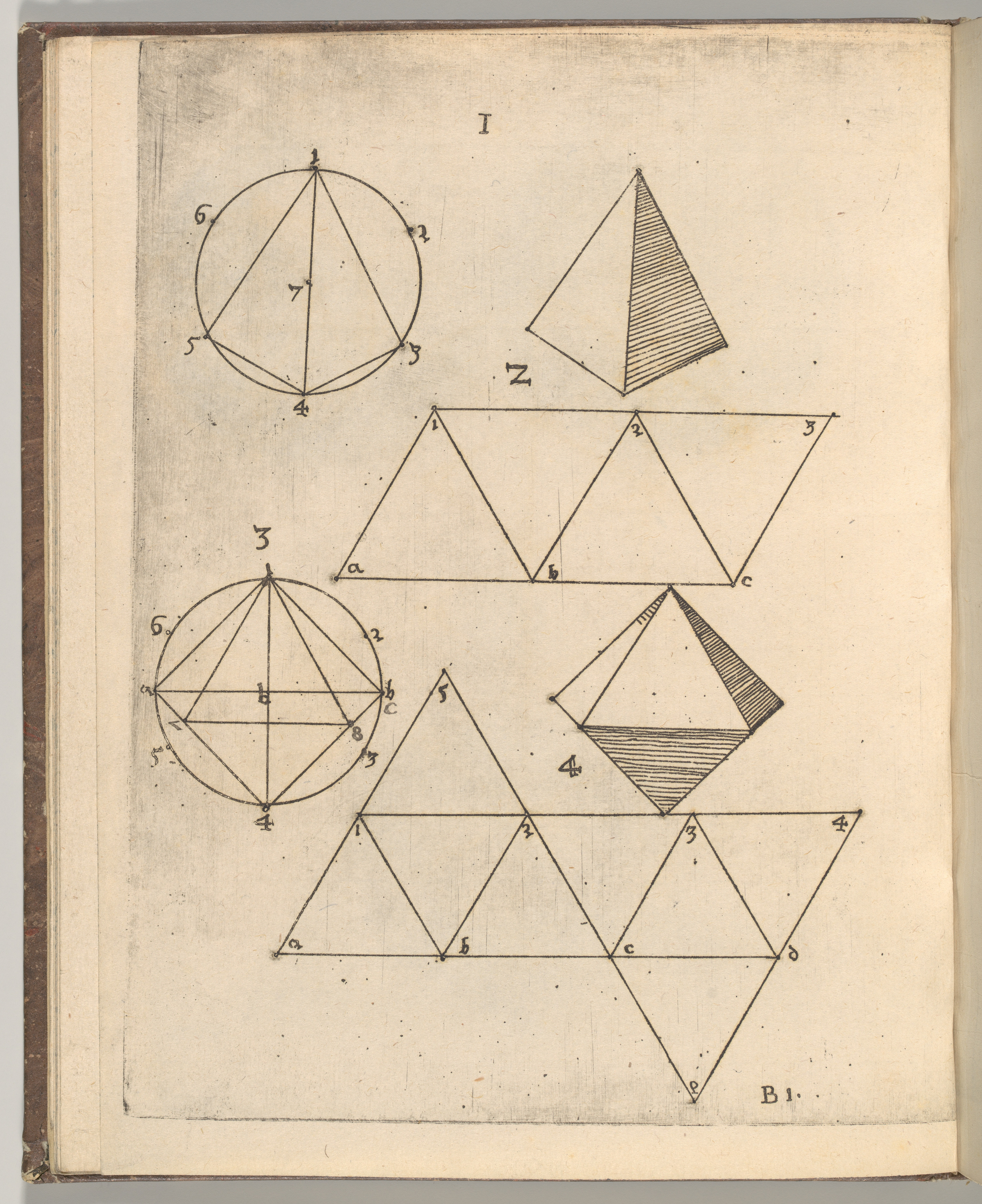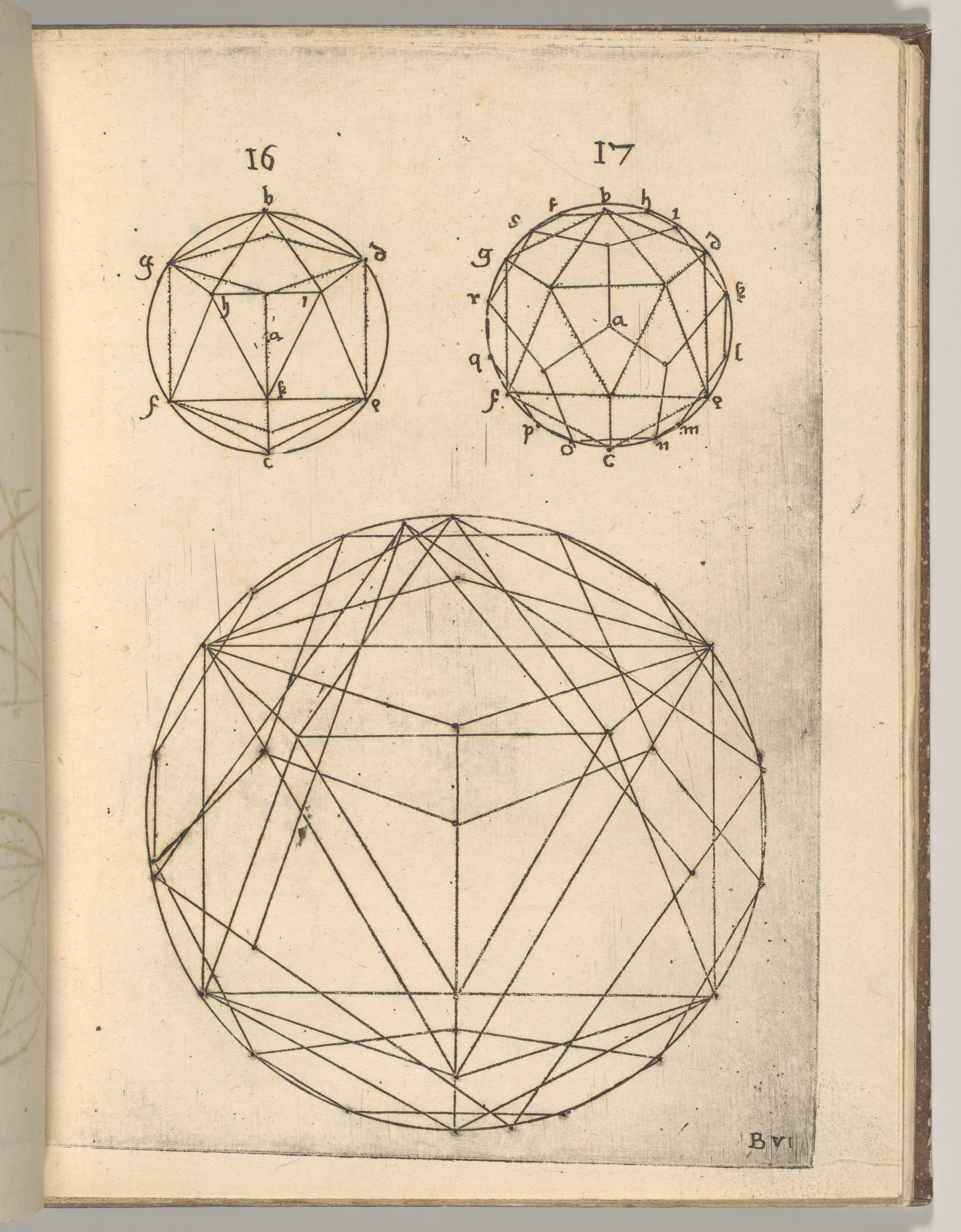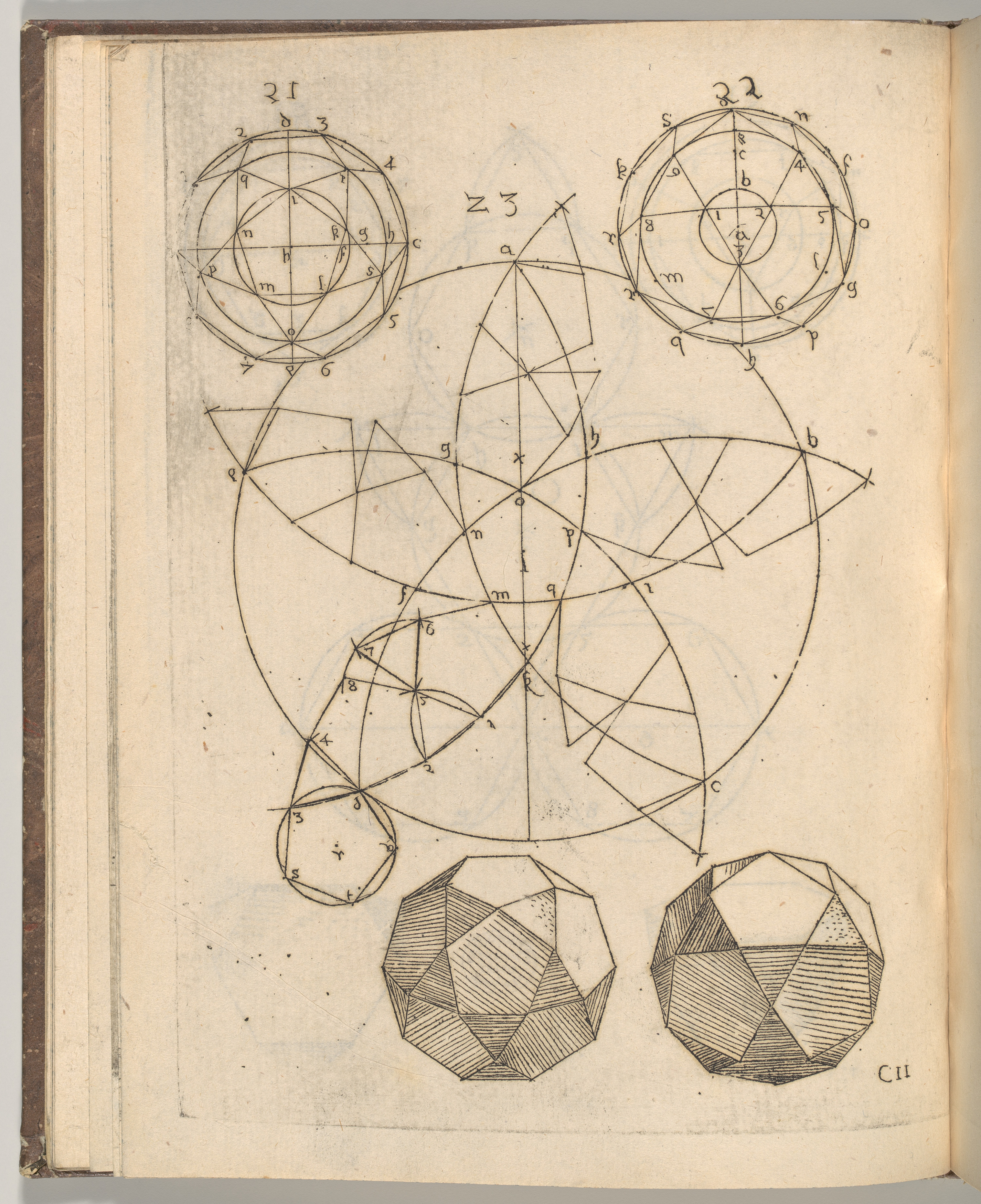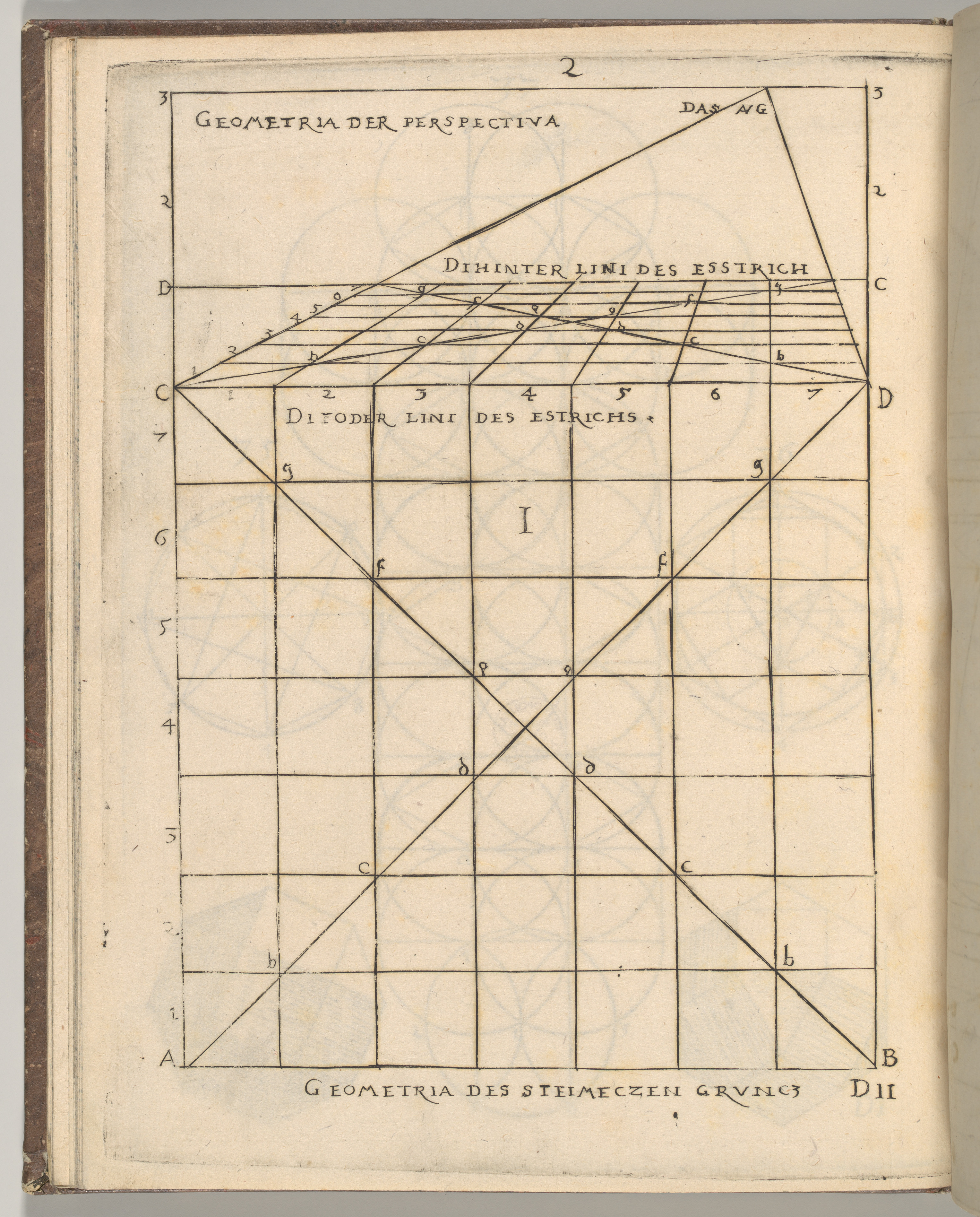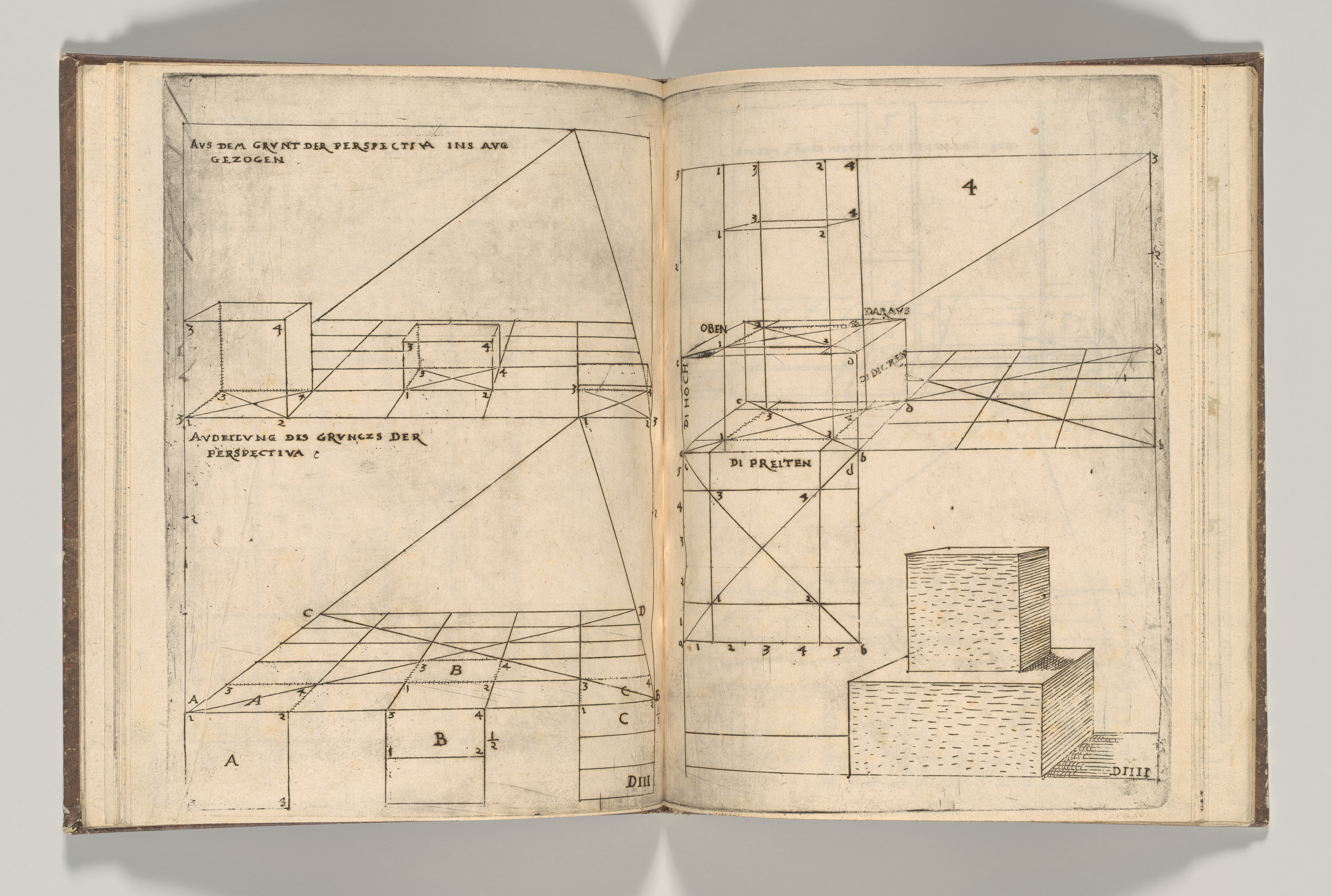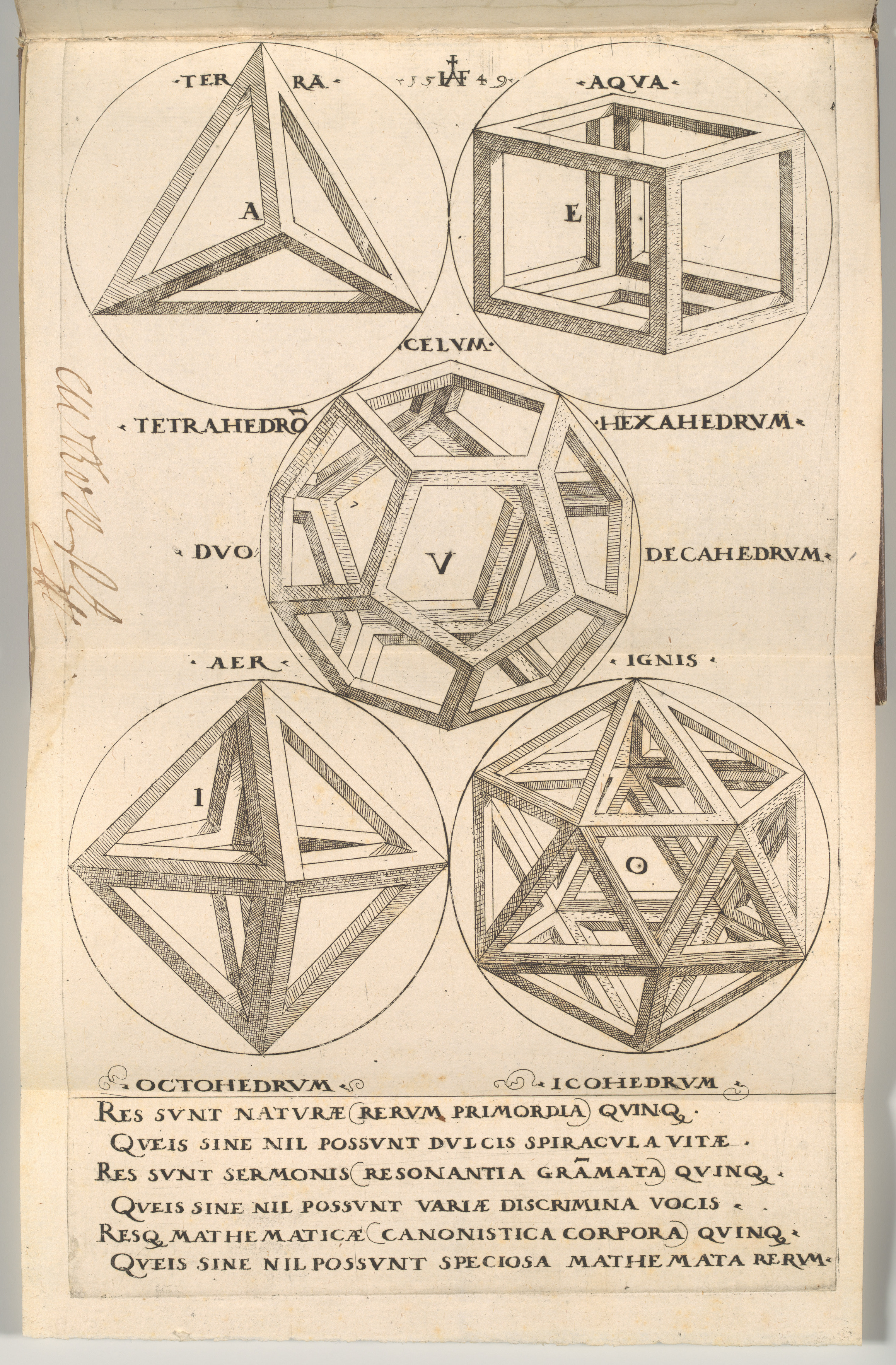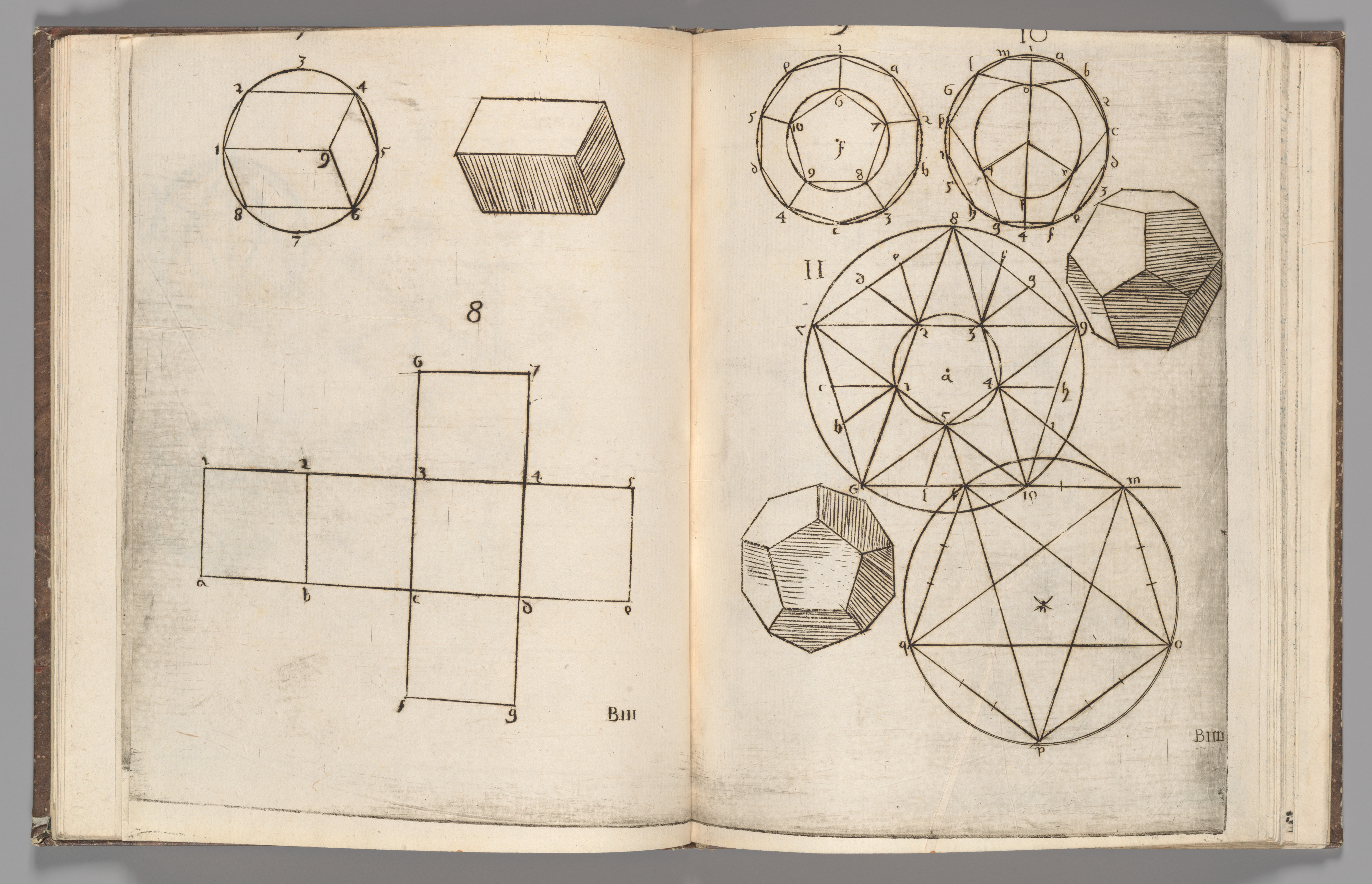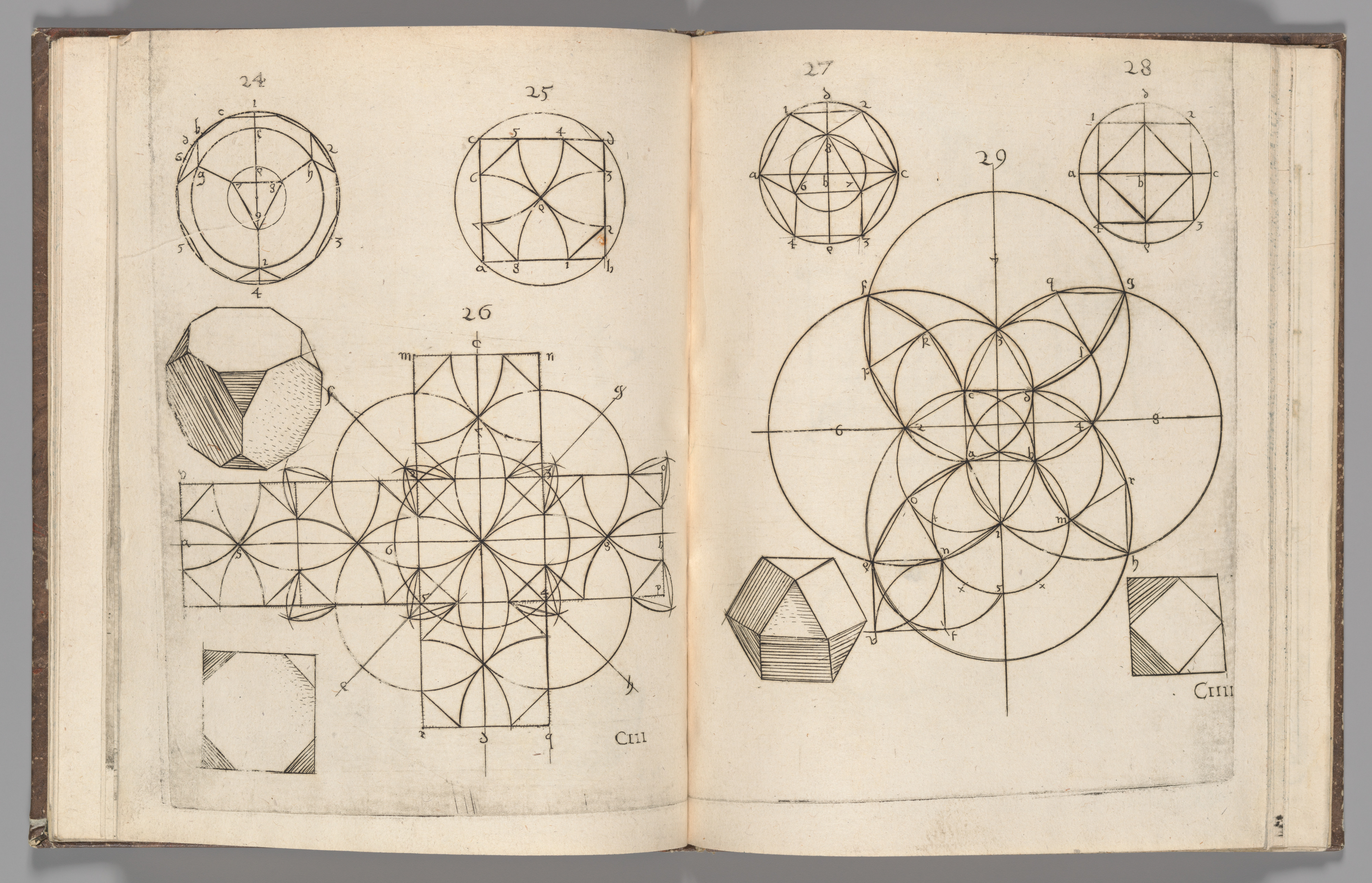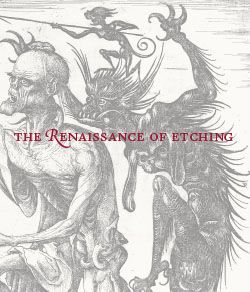A True and Thorough Instruction in Geometry (Ein aigentliche und grundtliche anweysung in die Geometria)
Augustin Hirschvogel German
Not on view
Hirschvogel begins his small booklet, whose title translates to "A True and Thorough Instruction in Geometry," with a lighthearted verse: The Book of Geometry is my name. / All liberal Arts were originally derived from me. / I reunite Architecture and Perspective. In combination with this etching, an addition to Hirschvogel’s volume of illustrations, it helps explain the sixteenth-century fascination with geometry. The etching shows the five Platonic solids—tetrahedron, hexahedron (cube), octahedron, dodecahedron, and icosahedron—which, according to Plato, were the building blocks of the material world and were connected to the four elements: earth, water, air, and fire. In sixteenth-century Germany, heaven was subsequently added as a fifth element, corresponding with the dodecahedron. Hirschvogel went one step further, connecting the polyhedrons and elements with the five vowels of the Latin alphabet, A, E, I, O, and U. It has been suggested that these might be read as one of two possible acronyms alluding to the global reach of Habsburg rule: Austriae Est Imparare Orbi Universo (It is Austria’s destiny to rule the world) or Alles Erdreich Ist …sterreich Untertan (The entire world is subject to Austria). Regardless of whether this last contention is true, Hirschvogel presents us with a holistic vision of the world in which geometry plays the central part.
Due to rights restrictions, this image cannot be enlarged, viewed at full screen, or downloaded.
This artwork is meant to be viewed from right to left. Scroll left to view more.



